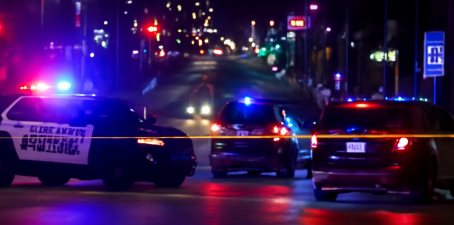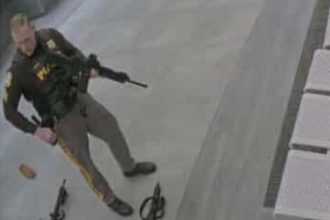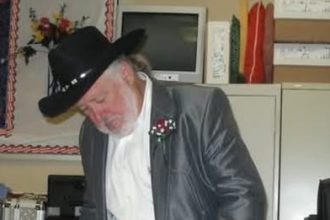In the quiet, early morning hours of Sunday, the calm on one of America’s busiest highways was violently shattered by a devastating and deeply unsettling tragedy. The life of 30-year-old Cristhian Eduardo Carvajal Saldana, a resident of New York, was abruptly cut short when he was struck and killed in a hit-and-run incident on Interstate 95 South near Exit 3 in Greenwich, Connecticut. What began as a call to assist with a disabled vehicle swiftly evolved into a complex criminal investigation that has since gripped local communities, law enforcement, and road safety advocates alike.
The story is not just one of a fatal accident, but of a young man’s life ending in chaos and mystery, leaving behind a heartbroken family and a community searching for answers. As details have slowly emerged, this event has come to symbolize larger societal issues involving highway safety, driver responsibility, the legal and moral obligations of motorists, and the heartbreaking consequences when those obligations are ignored.
Cristhian Eduardo Carvajal Saldana’s identity became known shortly after first responders and state police arrived at the grim scene around 4:30 a.m. Emergency calls had originally indicated a vehicle was disabled dangerously on the roadway, a not-uncommon event on I-95. However, those initial reports quickly escalated when follow-up information suggested that a pedestrian had been hit near the same location. As officers rushed to the scene, they were met with a horrific reality: Carvajal Saldana had been struck while standing in the left lane of the highway and died almost instantly from the impact.
Authorities noted that the vehicle which struck him did not stop. Instead, it continued traveling southbound, fleeing the scene without making any attempt to assist or report the fatal collision. This choice, to leave the scene of a death rather than offer aid or contact emergency services, turned a tragic accident into a criminal act. In Connecticut, and in most jurisdictions across the United States, leaving the scene of a crash that results in death is considered a felony and carries serious penalties, including imprisonment and substantial fines. It is not merely illegal—it is also an action widely condemned by both law and society as a betrayal of basic human decency.
The Connecticut State Police, who immediately opened an investigation into the hit-and-run, have treated the case with the utmost seriousness. From the outset, the goal was clear: to identify the driver, locate the vehicle, and bring justice to Carvajal Saldana and his family. That process began with the physical evidence left behind at the scene. State police investigators carefully combed through the debris field on the highway, documenting every fragment of plastic, glass, and metal that might yield clues about the vehicle involved.
Among the most telling discoveries were a driver’s side mirror housing, a piece of the front bumper on the driver’s side, and a section of trim from the front wheel area. Through an analysis of these fragments—based on their design, color, and material—investigators concluded with reasonable certainty that the vehicle responsible was a gray or silver Ford Transit Van, likely manufactured between 2015 and 2018. This is a model frequently used by commercial businesses for deliveries and transport, but also commonly found in private ownership due to its affordability and size.
At this point in the investigation, the key challenge became identifying how many such vehicles might exist in the region and whether any had been recently involved in a collision. Police reached out to the public through press releases and direct appeals, asking for any eyewitness accounts, dashcam footage, or surveillance video from nearby businesses that might have captured images of the van before or after the collision. Every passing hour without answers intensified the urgency, as forensic leads can grow cold quickly without public support or a lucky break.
While investigators pursued leads, questions mounted about the circumstances that led to Carvajal Saldana being in the left travel lane at that early hour. It is not uncommon for drivers or passengers of disabled vehicles to exit onto the roadway, sometimes in a state of confusion or distress, particularly if they are attempting to assess damage, retrieve items, or signal for help. While it is inherently dangerous to be on foot on a high-speed interstate—especially during hours of reduced visibility—such behavior is understandable in moments of duress. However, it remains unclear whether Cristhian was associated with the initial reports of the disabled vehicle or if his presence on the road stemmed from another cause altogether. Toxicology reports, witness statements, and forensic analysis may eventually clarify this aspect of the tragedy, but as of now, it remains one of the many haunting uncertainties surrounding the case.
For Carvajal Saldana’s family, the loss is as confusing as it is devastating. Friends and relatives describe him as a warm and compassionate young man, full of life and potential. He was reportedly known among his peers for his generosity and quiet strength, someone who worked hard and cared deeply for those around him. That his life ended in such a violent and impersonal manner—struck by a speeding vehicle and left alone on a highway—feels to many like a cruel twist of fate that compounds their grief with disbelief.
Community members in both New York and Connecticut have expressed their shock and sorrow, with many taking to social media and local forums to offer condolences and support. Memorial vigils have been discussed, and advocacy groups have already begun using the incident as a springboard for renewed calls to address the growing problem of hit-and-run fatalities in the United States.




